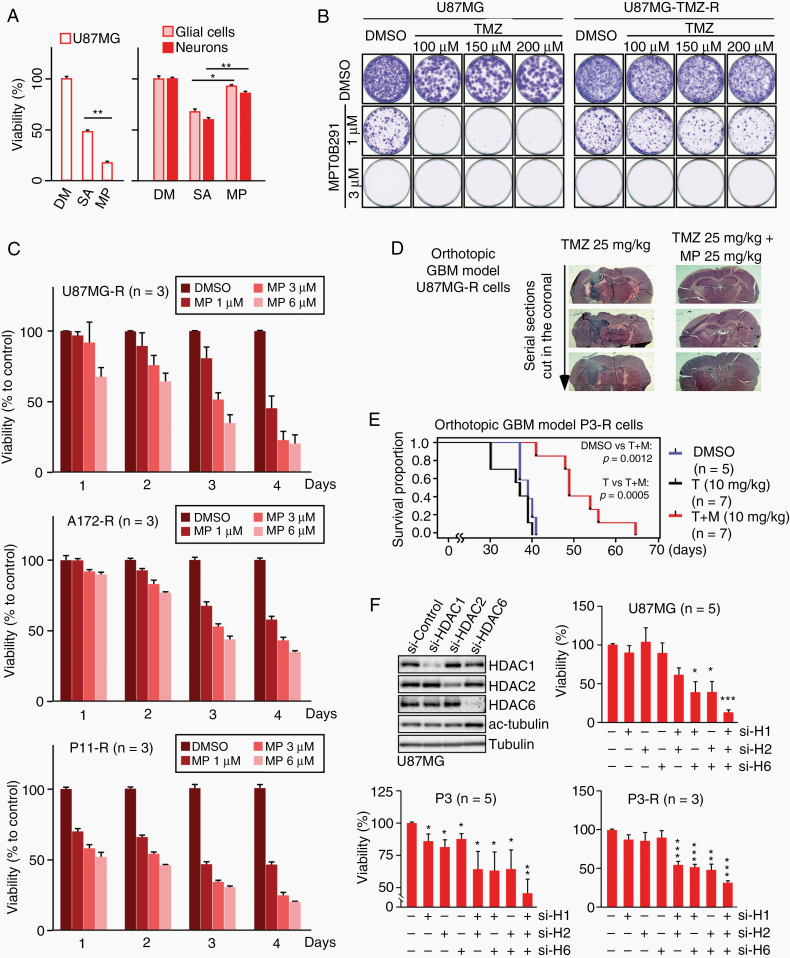Fig. 2.
HDAC1/2/6 inhibition significantly reduces the growth rates of TMZ-resistant GBM cells. (A) U87MG cells, as well as primary cultures of neurons and glial cells, were treated with 1 μM SAHA (SA), 1 μM azaindolyl sulfonamide compound 12 (MPT0B291, MP), or dimethyl sulfoxide (DMSO) (DM) for 4 days. After treatment, cell viability was assessed using colorimetric MTT assay. (B) In the focus formation assay, parental and TMZ-resistant (TMZ-R) U87MG cells were seeded at low density onto 60-mm plates, and treated with TMZ or MP alone or in combination at different doses every 3 days. Following a 2-week incubation period, the forming foci were stained using crystal violet. Representative images are shown. (C) TMZ-R GBM cell lines, including U87MG-R, A172-R, and P11-R cells, were treated with DMSO or different doses of MP (1, 3, 6 μM) for various time intervals (1 to 4 days). Cell viability was assessed using the MTT assay. (D) TMZ-R U87MG inoculated orthotopic mice were treated with 25 mg/kg TMZ to maintain a TMZ-resistant phenotype, and co-treated with or without 25 mg/kg MP every 2 days for 3 weeks. The brain tumors were observed using serial histology sections along the tumor using hematoxylin and eosin staining. (E) TMZ-R P3 inoculated orthotopic mice were randomly grouped and treated with DMSO, 10 mg/kg TMZ (T), or TMZ plus 10 mg/kg MP (T+M) every 2 days. Survival was plotted using a Kaplan–Meier curve. (F) Cells were transfected with HDAC1-, HDAC2-, and/or HDAC6-specific siRNAs or a nontargeting control siRNA as indicated for 2 days. After knockdown, cell viability was assessed using the MTT assay. (t-test: *P < 0.05, **P < 0.01, ***P < 0.001)

